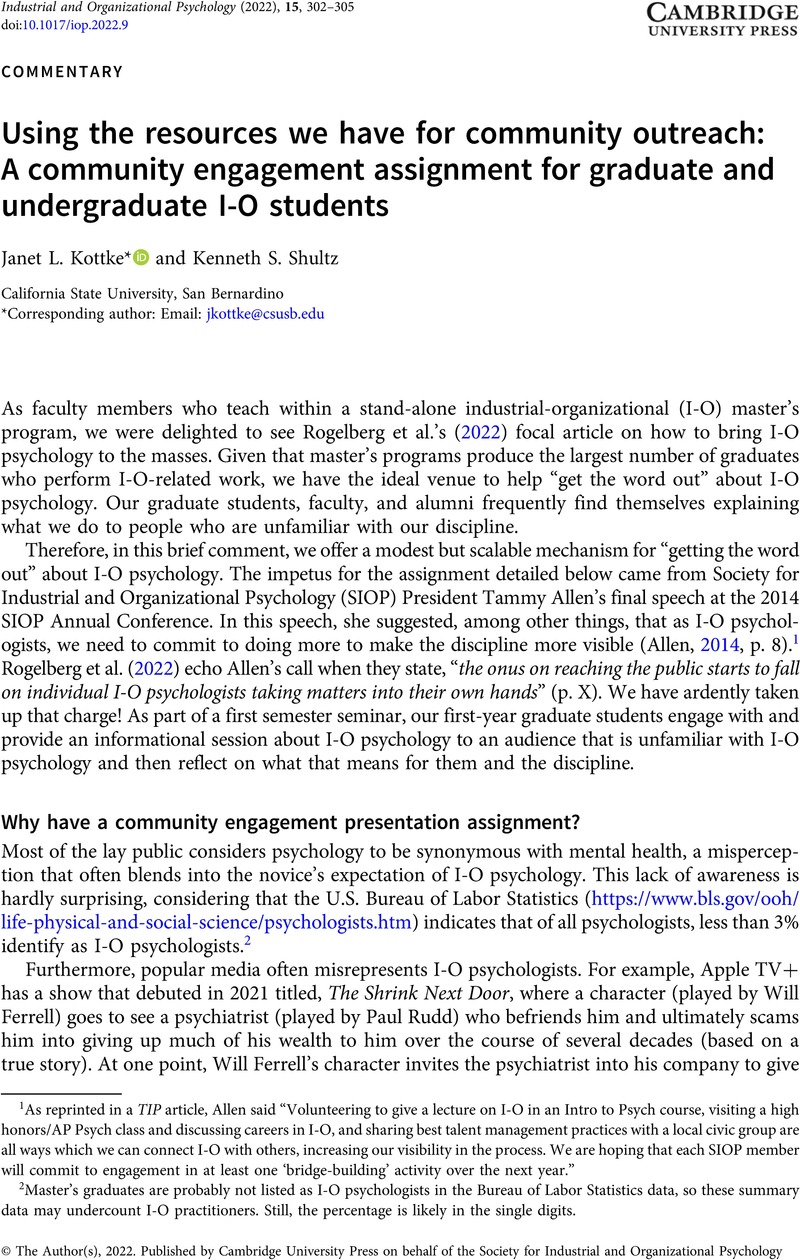No CrossRef data available.
Article contents
Using the resources we have for community outreach: A community engagement assignment for graduate and undergraduate I-O students
Published online by Cambridge University Press: 26 May 2022
Abstract
An abstract is not available for this content so a preview has been provided. Please use the Get access link above for information on how to access this content.

- Type
- Commentaries
- Information
- Copyright
- © The Author(s), 2022. Published by Cambridge University Press on behalf of the Society for Industrial and Organizational Psychology
References
Allen, T. (2014). A message from your president. The Industrial and Organizational Psychologist, 51(4), 7–9.Google Scholar
Collmus, A., & Litano, M. (2018). Lost in translation (8-part series): Practical recommendations for communicating the value of I-O psychology, The Industrial and Organizational Psychologist, 54(2), 31–40.Google Scholar
Erickson, A., Silzer, R., Robinson, G., & Cober, R. (2009). Promoting I-O psychology. The Industrial and Organizational Psychologist, 46(4), 45–54.Google Scholar
Rogelberg, S. G., King, E. B., and Alonso, A. (2022). How we can bring I-O psychology science and evidence-based practices to the public. Industrial and Organizational Psychology: Perspectives on Science and Practice, 15(2), 259–272.Google Scholar
Rose, M., Drogan, O., Spencer, E., Rupprecht, E., Singla, N., McCune, E., & Rotolo, C. (2014). I-O psychology and SIOP brand awareness among business professionals, HR professionals, faculty members, and college students. Industrial and Organizational Psychology: Perspectives on Science and Practice, 52(1), 154–162.Google Scholar


